What is the method of debugging in Python?
Test code used in this article:
from torchvision import transforms
from torchvision.datasets import FashionMNIST
import os
os.environ["KMP_DUPLICATE_LIB_OK"]="TRUE"
#数据集准备
train_data = FashionMNIST(
root = "./data/FashionMNIST",
train = True,
transform = transforms.ToTensor(),
download = True #如果没下载数据,就下载数据;如果已经下载好,就换为False
)
test_data = FashionMNIST(
root = "./data/FashionMNIST",
train = False,
transform = transforms.ToTensor(),
download = True #如果没下载数据,就下载数据;如果已经下载好,就换为False
)
train_data_x=train_data.data
train_data_y=train_data.targets
test_data_x=test_data.data
test_data_y=test_data.targets
print(train_data_x.shape)
print(train_data_y.shape)
print(type(train_data_x))
print(type(train_data_y))
print(test_data_x.shape)
print(test_data_y.shape)
def function1(x):
for i in range(x):
print(i)
function1(7)1. Introduction to debug environment
Click this crawler to start debugging
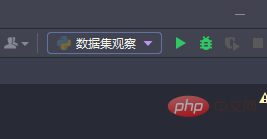
in Before debugging, we need to set breakpoints: (Several settings will do)
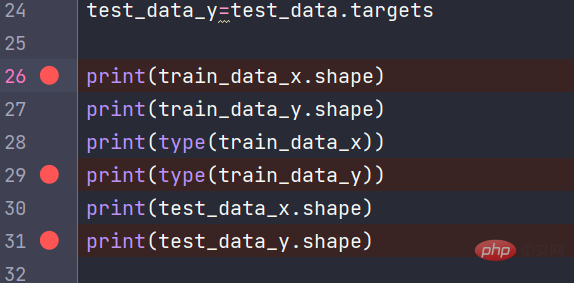
After entering debug, the lower left corner:

1) You can see the existing variables in the debugger:

2) In the console, you can see the step-by-step debugging process, and the output results will be printed in it:
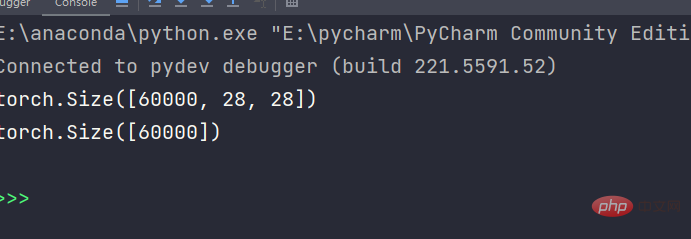
2. Introduction to the debug button

#1) step over shortcut key: F8
2) step into shortcut key: F7
3) step into my code shortcut key: alt shift F7
4) step out shortcut key: shift F8
2.1. step into: single-step execution (when encountering a function, it is also a single step)
Pay attention to the change of the blue line (the blue line means that it is about to be debugged, but it is still No debugging)
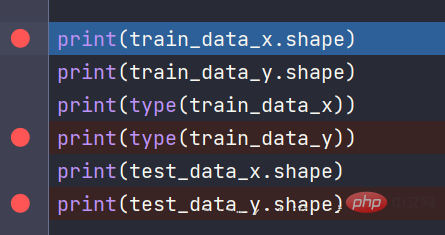
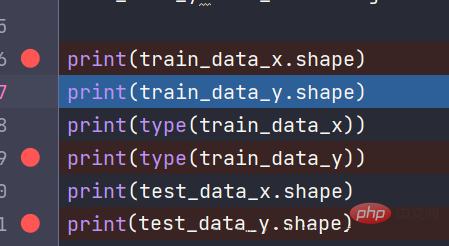
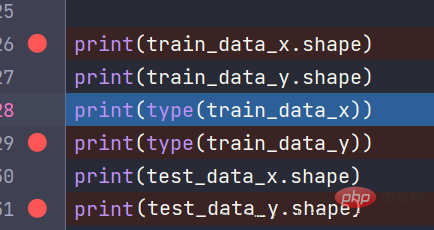

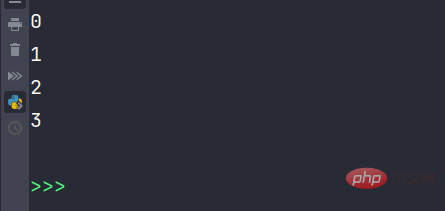
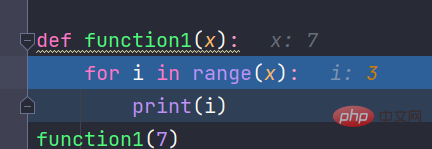
2.2. Step over: single-step execution (run all functions when encountering them)
Compared with step over, this is the difference between execution in the function: ( step over is executed directly)
2.3, step into my code: (jump directly to the next breakpoint)
This is easy to understand. I have three breakpoints here, so I will debug three times and then end: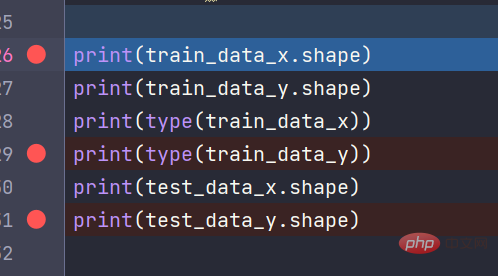
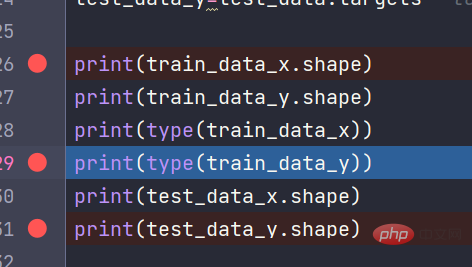
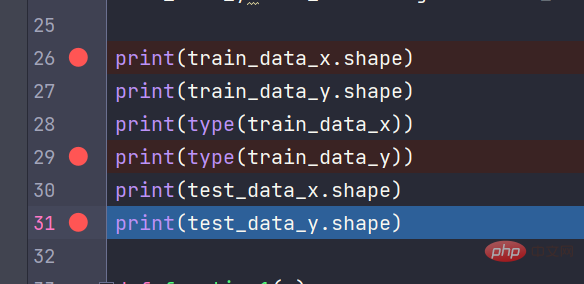

is the single-click function inside the function. When debugging step by step, use step out to complete the execution at once and return to the previous layer function.
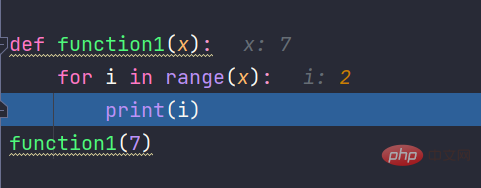
 After using it, the entire function is executed directly, but the process is not ended
After using it, the entire function is executed directly, but the process is not ended
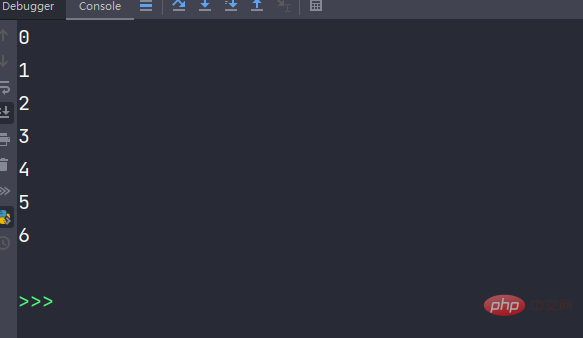 Look at the blue line, returning to the previous layer of function
Look at the blue line, returning to the previous layer of function
The above is the detailed content of What is the method of debugging in Python?. For more information, please follow other related articles on the PHP Chinese website!

Hot AI Tools

Undresser.AI Undress
AI-powered app for creating realistic nude photos

AI Clothes Remover
Online AI tool for removing clothes from photos.

Undress AI Tool
Undress images for free

Clothoff.io
AI clothes remover

Video Face Swap
Swap faces in any video effortlessly with our completely free AI face swap tool!

Hot Article

Hot Tools

Notepad++7.3.1
Easy-to-use and free code editor

SublimeText3 Chinese version
Chinese version, very easy to use

Zend Studio 13.0.1
Powerful PHP integrated development environment

Dreamweaver CS6
Visual web development tools

SublimeText3 Mac version
God-level code editing software (SublimeText3)

Hot Topics
 1657
1657
 14
14
 1415
1415
 52
52
 1309
1309
 25
25
 1257
1257
 29
29
 1230
1230
 24
24
 PHP and Python: Different Paradigms Explained
Apr 18, 2025 am 12:26 AM
PHP and Python: Different Paradigms Explained
Apr 18, 2025 am 12:26 AM
PHP is mainly procedural programming, but also supports object-oriented programming (OOP); Python supports a variety of paradigms, including OOP, functional and procedural programming. PHP is suitable for web development, and Python is suitable for a variety of applications such as data analysis and machine learning.
 Choosing Between PHP and Python: A Guide
Apr 18, 2025 am 12:24 AM
Choosing Between PHP and Python: A Guide
Apr 18, 2025 am 12:24 AM
PHP is suitable for web development and rapid prototyping, and Python is suitable for data science and machine learning. 1.PHP is used for dynamic web development, with simple syntax and suitable for rapid development. 2. Python has concise syntax, is suitable for multiple fields, and has a strong library ecosystem.
 PHP and Python: A Deep Dive into Their History
Apr 18, 2025 am 12:25 AM
PHP and Python: A Deep Dive into Their History
Apr 18, 2025 am 12:25 AM
PHP originated in 1994 and was developed by RasmusLerdorf. It was originally used to track website visitors and gradually evolved into a server-side scripting language and was widely used in web development. Python was developed by Guidovan Rossum in the late 1980s and was first released in 1991. It emphasizes code readability and simplicity, and is suitable for scientific computing, data analysis and other fields.
 Python vs. JavaScript: The Learning Curve and Ease of Use
Apr 16, 2025 am 12:12 AM
Python vs. JavaScript: The Learning Curve and Ease of Use
Apr 16, 2025 am 12:12 AM
Python is more suitable for beginners, with a smooth learning curve and concise syntax; JavaScript is suitable for front-end development, with a steep learning curve and flexible syntax. 1. Python syntax is intuitive and suitable for data science and back-end development. 2. JavaScript is flexible and widely used in front-end and server-side programming.
 How to run sublime code python
Apr 16, 2025 am 08:48 AM
How to run sublime code python
Apr 16, 2025 am 08:48 AM
To run Python code in Sublime Text, you need to install the Python plug-in first, then create a .py file and write the code, and finally press Ctrl B to run the code, and the output will be displayed in the console.
 Can vs code run in Windows 8
Apr 15, 2025 pm 07:24 PM
Can vs code run in Windows 8
Apr 15, 2025 pm 07:24 PM
VS Code can run on Windows 8, but the experience may not be great. First make sure the system has been updated to the latest patch, then download the VS Code installation package that matches the system architecture and install it as prompted. After installation, be aware that some extensions may be incompatible with Windows 8 and need to look for alternative extensions or use newer Windows systems in a virtual machine. Install the necessary extensions to check whether they work properly. Although VS Code is feasible on Windows 8, it is recommended to upgrade to a newer Windows system for a better development experience and security.
 Where to write code in vscode
Apr 15, 2025 pm 09:54 PM
Where to write code in vscode
Apr 15, 2025 pm 09:54 PM
Writing code in Visual Studio Code (VSCode) is simple and easy to use. Just install VSCode, create a project, select a language, create a file, write code, save and run it. The advantages of VSCode include cross-platform, free and open source, powerful features, rich extensions, and lightweight and fast.
 How to run python with notepad
Apr 16, 2025 pm 07:33 PM
How to run python with notepad
Apr 16, 2025 pm 07:33 PM
Running Python code in Notepad requires the Python executable and NppExec plug-in to be installed. After installing Python and adding PATH to it, configure the command "python" and the parameter "{CURRENT_DIRECTORY}{FILE_NAME}" in the NppExec plug-in to run Python code in Notepad through the shortcut key "F6".




